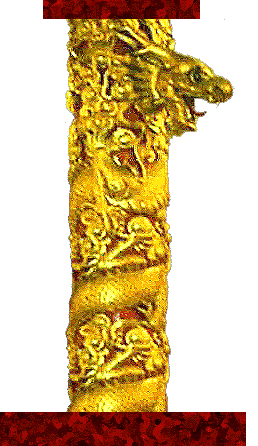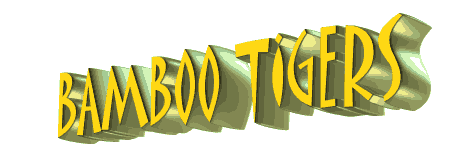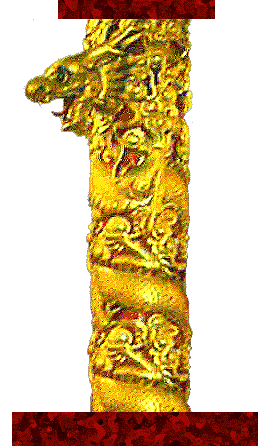| |
After the incident at the Japantown Autumn Festival, when Joe Boys jumped a kid with a radio, Foley and Mollat started including walks through the Japanese area as part of a regular routine. They began to see numerous Joe Boys who had been scarce elsewhere--Henry Lee, Larry Ueda, Eugene Yoshi (the Japanese-American boy), Jeung Him Tom, Andrew Shum, Lindsay Leong, Brian Kwan, Victor Pedrucco, Steven "Halfbreed" Lee--and some of their girls, like April Kitagawa, another Japanese-American, who was the girlfriend of a Joe Boy named Patrick Huey. Patrick's younger brother, Felix, also a Joe Boy, had been killed in a major gang shootout earlier in 1977.
Foley also ran into a youngster who had served for awhile as one of his informants. The kid had never supplied anything other than generalities, but Foley had continued to cultivate him in case the relationship between the two--priestly cop and suspicious gang kid --should blossom into one where the boy would feel safe enough to talk in specifics. It never did quite pay off, but on the occasion of this meeting, the boy had an interesting story to tell.
It seemed that the previous Saturday night he had gone to Japantown with a friend, for the first time in a few weeks because the omnipresent Gang Task Force was making it too hot in the area. The kids were keeping cover and trying to stay out of sight, knowing they would be collared and interviewed if seen. None of them knew how many cops comprised the Force; that was a carefully guarded secret. That Saturday, though, had promised to be a special occasion. On the docket was a fight between girlfriends of the Joe Boys and girlfriends of the Wah Ching. The Joe Boys themselves, heavily armed, as usual, had hung around in hopes of bagging a few W.C.'s who might venture forth to watch the fun.
Everything was going fine. The girls were arriving on the scene in small batches, and it looked like Japantown would get to see something its orderly, law-abiding citizens had never dreamed of--a gang of tough young Amazons battling tooth and nail in the streets. This was in late 1977, of course, some years before chain- and knife-wielding female gang kids began to proliferate in Japan, as they had by 1984. But the Gang Task Force, by now seemingly omnipresent, had dispatched some units to Japantown after receiving a tip that there might be some kind of trouble out on Post Street in the shadow of the Peace Pagoda.
Most of the Joe Boys took off when the Dragon Force appeared, but some remained to cover as escorts for the girls, in an effort to make things look normal. The ones who left went to Van's Pool Hall on Van Ness Avenue and then to the Mechanical Museum on Jones Street to cruise around--probably scouting for the no-show Wah Ching guys.
Only rarely did the Asian girls enter police files, and then primarily for being present when the boys were interviewed or seen around town. There were no female gang members, per se; however, there were always groups of females associating with the gangs. They sometimes figured in cases, like the Lincoln Louie kidnapping and homicide in 1974, when young girls were present in the Milpitas apartment while the 15-year-old Lincoln was brutally assaulted by Wah Ching, or, in the same case, when Lena Soo Hoo served as outside contact for the males while they hid out afterward at a motel on Lombard Street. The case involving Kit Mun Louie's killing by Hotdog Louie in 1976, details of which were not unraveled until late 1977, would reveal that the girls often carried guns for the gang guys, an assignment also frequently given to the youngest boys who, as juveniles, would not receive harsh sentences if caught. The gangs were especially adept at perverting the law to their own benefit.
During the Golden Dragon investigation, the F.B.I. had run across information suggesting that a woman had driven the getaway vehicle after the massacre. The car had been described to the Force. Foley and Larry Wong, a Chinese-American member of the Force, had gone out to Z's Buffet Restaurant on Geary Street, near Arguello, on Saturday, September 24, 1977, to check out a large Chinese party there. They saw Lena Soo Hoo's sister, Jeannie, drive away in a car answering the description of the one possibly involved in the Golden Dragon. Lena and Jeannie had been involved in the gang scene--with both Wah Ching and Joe Boys--for several years. Gang girls were known to be fickle; they switched allegiances as deftly as models changed clothes in a fashion show. They followed the power cycle from group to group and, so far as was known, got away with it--except for Kit Mun Louie, whose pathetic demise was, even so, an accident.
After her sighting at Z's Buffet, Jeannie was interviewed at her home by Tim Simmons, Ron Schneider and Fred Lau about the Golden Dragon. Her parents were present. Her alibi proved to be sound; she had gone fishing with a boyfriend--not her steady date at the time, but "just a friend," who happened to be Eugene Fong, the youngest brother of Joe Fong, who also had an older brother named Gene, murdered by Wah Ching Perch Chan in 1974. Both her fishing buddy and her regular boyfriend were gang-connected. She disclaimed any knowledge of the Golden Dragon and offered to submit to a polygraph--"lie detector"--test. She said she had heard nothing about a woman driving the getaway car.
Other, younger girls were apparently shifting into a higher gear than either Jeannie or Lena Soo Hoo ever had during their days as teen-age gang consorts. A year after the Force's interview with Jeannie, which took place in October 1977, a 17-year-old Chinese girl named Terry Lee was kidnapped at Pier 39, driven to Golden Gate Park, and viciously assaulted by a group of teen-agers, all female, who were known to keep company with male gang kids. Not the girl, but her parents, reported the incident to police who found her at Children's Hospital, frightened and badly injured. Even then, Terry's fear of retribution from her attackers, if she talked, was so great that she didn't dare say a word. When police arrived, doctors feared she had suffered a broken cheek and an arm fracture. Her face was badly cut, and her hair showed signs of having been sheared off at the ends.
Mr. and Mrs. Lee told the officers that Terry had been beaten up by the same group two weeks earlier, at Washington High School, which happened to be Wah Ching territory. At least one of the girls involved was a student at Lincoln High, or Joe Boy turf. No police report had been made then, again because of Terry's fear of reprisal by the suspects. She had been told she would be killed if she squealed on her attackers, who had reiterated the threat after the second assault. Finally, Terry decided to throw caution to the wind and identified the girls involved. Perhaps she concluded that not talking after the earlier beating had not prevented the second one--and a third might prove fatal. It would seem that gang girls suffered from the same push-your-luck syndrome as gang boys. Too much was never enough.
Terry related that she got off work in an arcade at Pier 39 and waited outside for her father to pick her up at 6:15 P.M. The pier was new in 1978, a massive boardwalk planted on pilings sunk into San Francisco Bay, near the commercial and entertainment complex that included Fisherman's Wharf, the Cannery and Ghirardelli Square. Shops and restaurants were among the many attractions the pier held for tourists, along with stages for live shows and the Palace of Fun Arts for children.
A 1968 four-door, metallic-gray Pontiac, containing four girls, pulled up in front of Terry. The girls, all of Asian or part-Asian extraction, were ready to practice their gang-kid version of a "fun art": surrounding Terry, they forced her into the car, punched her in the face and eventually drove, after dark, to Golden Gate Park.
The thousand acres of motor roads, footpaths and bridle trails dividing the Richmond and the Sunset Districts, bordered on its western end by the Great Highway and the sea, is everybody's favorite park in "everybody's favorite city." Walking the dog, tossing Frisbees and boomerangs, picnicking, jogging, viewing superb art collections at the De Young and Asian Art Museums, listening to dolphins chatter at the Aquarium, meditating on cloud formations while stretched out on the grass beside beds of knee-high sweetpeas, or sipping green tea in the Japanese Tea Garden--these activities no more than scratch the surface of things to do there.
Terry's girlish kidnappers had no such simple pleasures in mind. They parked behind the Music Concourse, where Strauss waltzes were often played on summer afternoons, and ordered her out of the car. "It's hopeless for you to try to escape," one of them told her. "We'll kill you if you try."
They led her to a pedestrian tunnel under Academy Drive, a lonely place at night, heavily shielded by trees. They knocked her to the ground and pummeled her about the head and body. When a piece of jade from a necklace Terry wore snapped off and struck the ground, one of the girls crowed in triumph: "Good! We knocked a tooth out!" While the others kicked the prostrate youngster, one of their number whipped out a pair of scissors. The rest held Terry down while she sheared off handfuls of the victim's hair.
Then, leaving Terry on the ground, the assailants fled. As she lived in the Richmond, about 20 blocks from the scene of the beating, Terry managed to walk home. Her horrified parents listened to their wounded daughter beg them not to call the cops. She didn't even want to go to the hospital, but they whisked her away to Children's Hospital immediately, and called the police. To hell with the wall of silence!
Marcella Yuen, 18, and April Kitagawa Huey, 21 (who had married Patrick Huey, a Joe Boy), were arrested and charged with kidnapping and assault. Anne DeSilva, 17--a cousin of half-Chinese Joe Boys Victor and Alberto Pedrucco--and Carol Choi, also 17, the student at Lincoln High, could not be found immediately.
None of the girls served time, getting off with reprimands and probation. None of them talked, either. Police were never to learn why Terry was kidnapped and beaten so badly. The wall of silence was as effective a shield for the bamboo tigress as for the bamboo tiger. It was known that Terry argued violently with them in the car, not in behalf of her release, but about something else which remains a mystery. It may have been about a gang boy or a cutting remark.
All Chinese gang kids, male or female, were explosive people so hypersensitive about almost anything that it took little to light their fuses and cause a detonation. Trimming these fuses and preventing violent discharges of energy was one of the tasks the Dragon Force considered part of its raison d'être.
Its ubiquitous presence was neither appreciated nor fully understood by San Francisco's youthful criminals. Marshall Wong, a Chinese-American member of the unit, stopped two teen-age gangsters on the streets of Chinatown one night at 11:15, a quarter of an hour past the long-standing curfew for juveniles.
"You guys are always bothering us," declared one, with considerable irritation. "Following us around, you know."
That was the highest accolade, although an inverted one, any gang kid could have given the Dragon Force.
| |
|









